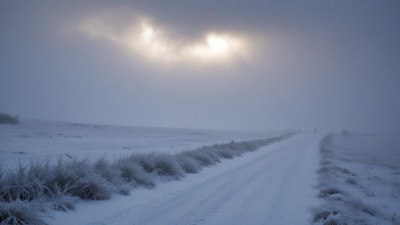Why Some Places Never See Snow
Explore why certain regions around the globe experience no snowfall despite seasonal changes.

This image was created with the assistance of Freepik
Snow, a beautiful and fascinating phenomenon, captivates individuals with its serene white landscapes, yet there are many places around the world that never experience its charm. Understanding why some locations never see snow requires us to delve into the various climate and geographical factors that influence weather patterns. The absence of snowfall in certain regions, such as tropical areas, desert climates, and specific coastal locations, can be attributed to a combination of temperature, humidity, and climatic influences. This article will explore these elements in detail and illuminate the unique climates that keep snow at bay.
The Role of Temperature
One of the primary reasons some places never see snow is their consistently high temperatures. Snow forms when atmospheric conditions drop to freezing or below, specifically at 0 degrees Celsius (32 degrees Fahrenheit). Regions where temperatures rarely dip below this threshold typically do not experience snowfall. For instance, equatorial regions like the Amazon rainforest maintain a warm climate year-round, averaging temperatures between 20 to 30 degrees Celsius (68 to 86 degrees Fahrenheit). This stable warmth ensures that precipitation falls in the form of rain instead of snow.
Geographical Influences
Geographical features play a vital role in determining snowfall patterns. Areas such as deserts, which are characterized by their arid conditions and minimal moisture, often remain snow-free. For example, the Sahara Desert experiences extreme heat during the day and relatively cooler temperatures at night, yet not cool enough to create snow. Furthermore, the lack of humidity in desert air prevents cloud formation that could lead to winter precipitation.
Latitude and Climate Zones
Latitude is another crucial factor that influences whether a location sees snow. Simply put, the Earth's tilt causes variations in sunlight exposure across regions. Areas near the equator, such as countries in Central Africa, receive consistent direct sunlight throughout the year. This persistent warmth inhibits the ability of these regions to experience temperatures conducive to snow. In contrast, regions situated at higher latitudes, particularly within the polar and subpolar zones, are more likely to experience snowfall due to their colder climates.
Ocean Currents and Their Impact
Ocean currents can also significantly affect climate, influencing patterns of temperature and precipitation. Warm ocean currents, such as the Gulf Stream, raise the temperatures of coastal areas, leading to warm and moist climates. For example, the coastal regions of Florida experience warm temperatures year-round which prevents snowfall. Conversely, cold ocean currents, like the California Current, can contribute to cooler coastal temperatures but might not lead to sufficient snowfall if other climatic conditions aren't favorable.
Microclimates and Urban Heat Islands
Microclimates can exist within larger climatic regions, creating pockets of unique weather and temperature. Urban areas, especially those densely populated, often develop urban heat islands, where temperatures are artificially elevated due to human activity, concrete infrastructure, and reduced greenery. Cities like Los Angeles or Dubai can maintain higher temperatures that prevent snow despite being geographically positioned at varying latitudes. The urban heat island effect can cause these areas to receive rain while surrounding regions experience snowfall.
Case Study: Australia
Australia serves as an excellent case study of a place that rarely sees snow. With vast stretches of desert in the interior and a predominantly temperate climate along its coastline, most of Australia enjoys warm to hot weather year-round. The northern region, consisting of tropical climates, rarely dips to the freezing point necessary for snow formation. The mountainous areas, such as the Australian Alps, do receive snow during winter, but the majority of the country remains dry and warm. This mixture of climatic diversity and geographical influences keeps snow largely absent from the Australian landscape.
Impact of Climate Change
Climate change has brought about significant shifts in weather and precipitation patterns, especially in regions typically known for snowfall. As global temperatures rise, the likelihood of snowfall decreases in many areas. Some regions that previously received significant snowfall are beginning to see rainfalls instead, which further contributes to the absence of snow. This transformation can have profound impacts on ecosystems, agriculture, and water supply. Diminished snowpack affects freshwater sources that rely on melting snow during warmer months, leading to potential water shortages and ecological imbalance.
Future Projections
Looking toward the future, the possibility of places that have never seen snow ever receiving snowfall is still a topic of discussion among climatologists. While significant changes would need to occur in temperature, humidity, and precipitation patterns, it is not entirely outside the realm of possibility given the ongoing climate crisis. Continuous monitoring of global weather patterns is essential for predicting long-term climate changes and their impact on snowfall.
Understanding why some places never see snow encompasses a broad range of climatic and geographical elements. From consistent high temperatures and geographical barriers to ocean currents and urban heat islands, various factors contribute to the absence of snowfall in certain regions. The complexities of climate and weather patterns reveal the intricate balance of our Earth’s ecosystems. While it's unlikely that these non-snow locales will see snow in the traditional sense, ongoing climate change poses a potential for shifts in weather patterns that may alter the standard climates we have come to know.











